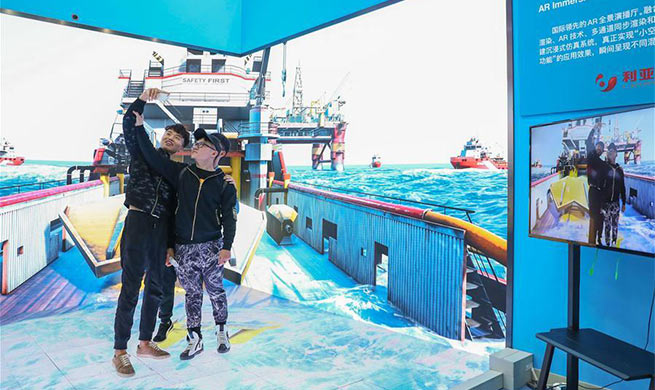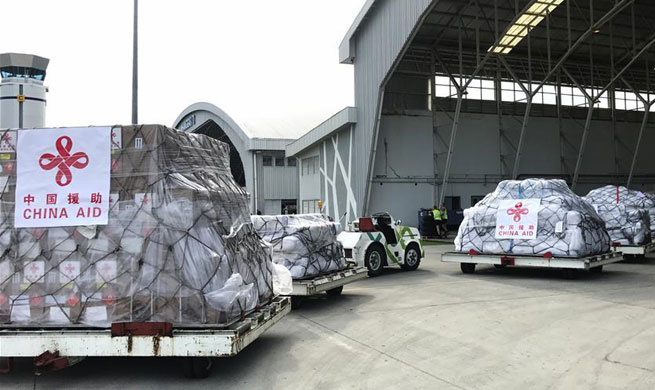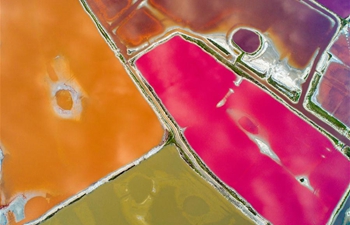SYDNEY, Oct. 10 (Xinhua) -- The Royal Australian Navy have begun trialling a cutting-edge new material which may hold huge ramifications for the global shipping industry.
Developed by Swinburne University of Technology (UOT), the Defence Materials Technology Center and a number of other partners, the anti-barnacle coating is being tested on the hydraulic components of the HMAS Canberra - one of the Royal Australian Navy's key helicopter dock ships.
"It is a material that we have formulated at our lab and it consists of a single layer, carbon-based coating," one of the lead scientists of the team, Dr. Andrew Ang of Swinburne UOT, told Xinhua on Wednesday.
"Most of the other products in the market that you find for critical components are usually uncoated and rust very quickly, or for surface coating, they consist of two or three layers and are very complicated."
"So what we have done, is try to simplify the technology, simplify the whole process so it can be applied easily."
Costing the global shipping industry billions of dollars every year, biofouling and corrosion occur when barnacles and marine plants attach themselves to ships.
When this happens, it can damage critical mechanical components onboard as well as increase the drag on a ship as it sails, causing it to burn far more fuel.
"If you walk along any jetty at a yacht club, you will see barnacles are very prevalent, especially in tropical areas and in areas that experience quite a hot summer," Ang said.
"Because countries like Australia rely on shipping and the export of goods, I think it is really critical."
"But the other thing is that you don't want species from another part of the world invading our ecosystems, so that is another reason why this technology will help," he added.
Administered with a "flamethrower," the material made up of a combination of ceramics and metals, is too expensive to be used on the ship's entire hull.
At this stage, just the critical components like fin stabilizers, propellers and elevators have been treated with the coating.
"A flamethrower is a non-technical term, but hopefully it captures the attention of the public," Ang joked.
"So what we do is use a super-sonic flame jet and we inject it with the powder and it propels the powder after it has been melted straight onto the surface and due to the extreme heat and the extreme speed, we can form a very dense coating that can be used for marine protection."
"Part of the reason it is so expensive, is when you blend this composite material, there is a great deal of cost involved."













